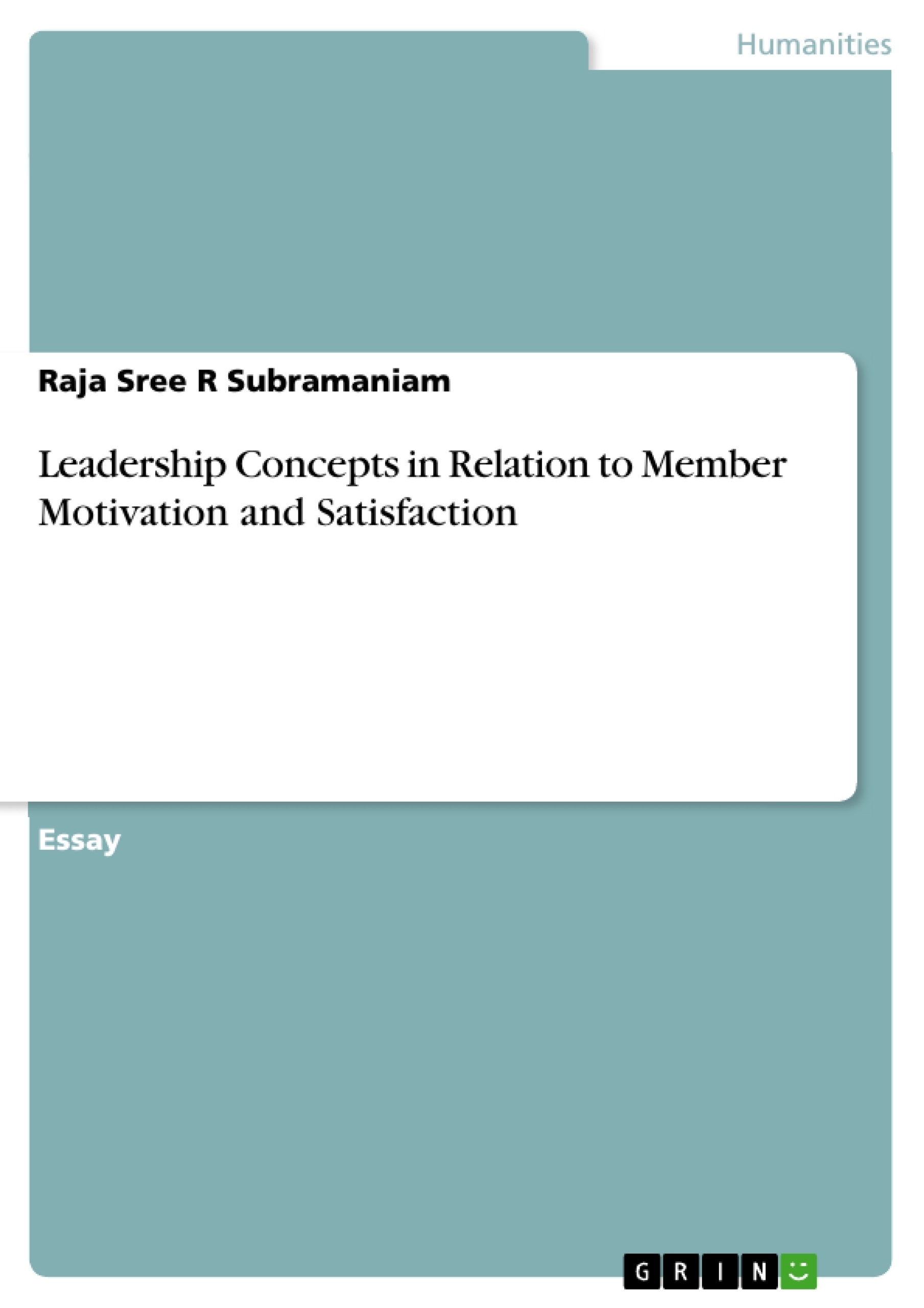This essay aims to discuss effects of various leadership approaches on member motivation and satisfaction. Leadership is a social influence phenomenon which functions to persuade, motivate and unite members in a group towards achieving shared objectives (House et al., 2002). Research has shown that there is a positive relationship between a leadership style and the ability to influence others’ psychological state. (Keltner, Gruenfeld & Anderson, 2003). That is, higher productivity and greater satisfaction are recorded when members’ needs are understood and satisfied (House, 1996, p.340).
The issue of whether leaders should strictly be a goal oriented or people oriented to have been the subject of much research. Both sides of the debate defend each concept as more effective than the other, but these findings do not resolve the issue. Instead, it can be argued that other equally important factors such as leader and follower characteristics, task structure, gender roles, cross- cultural differences and various other situational demands have an impact on leadership approach. Effective leaders place importance in identifying distinctive qualities of individuals in a group and are ever willing to provide motivation and support towards achieving a common goal (House et al., 2002). Consequently, greater cooperation, understanding and support of decision are achieved.
Leadership Concepts in Relation to Member Motivation and Satisfaction

Essay , 2011 , 8 Pages , Grade: A
Autor:in: Raja Sree R Subramaniam (Author)
Psychology - Social Psychology
Excerpt & Details Look inside the ebook

